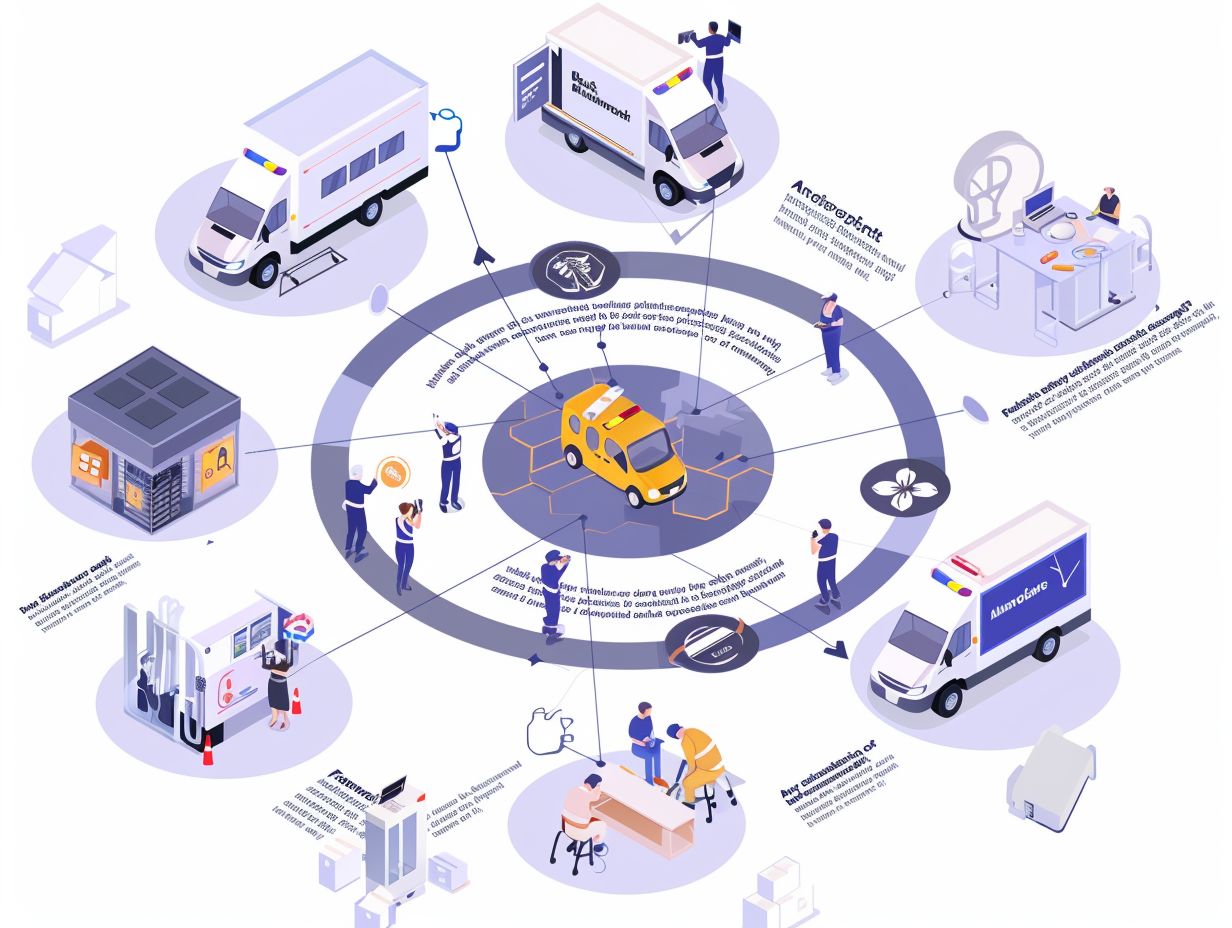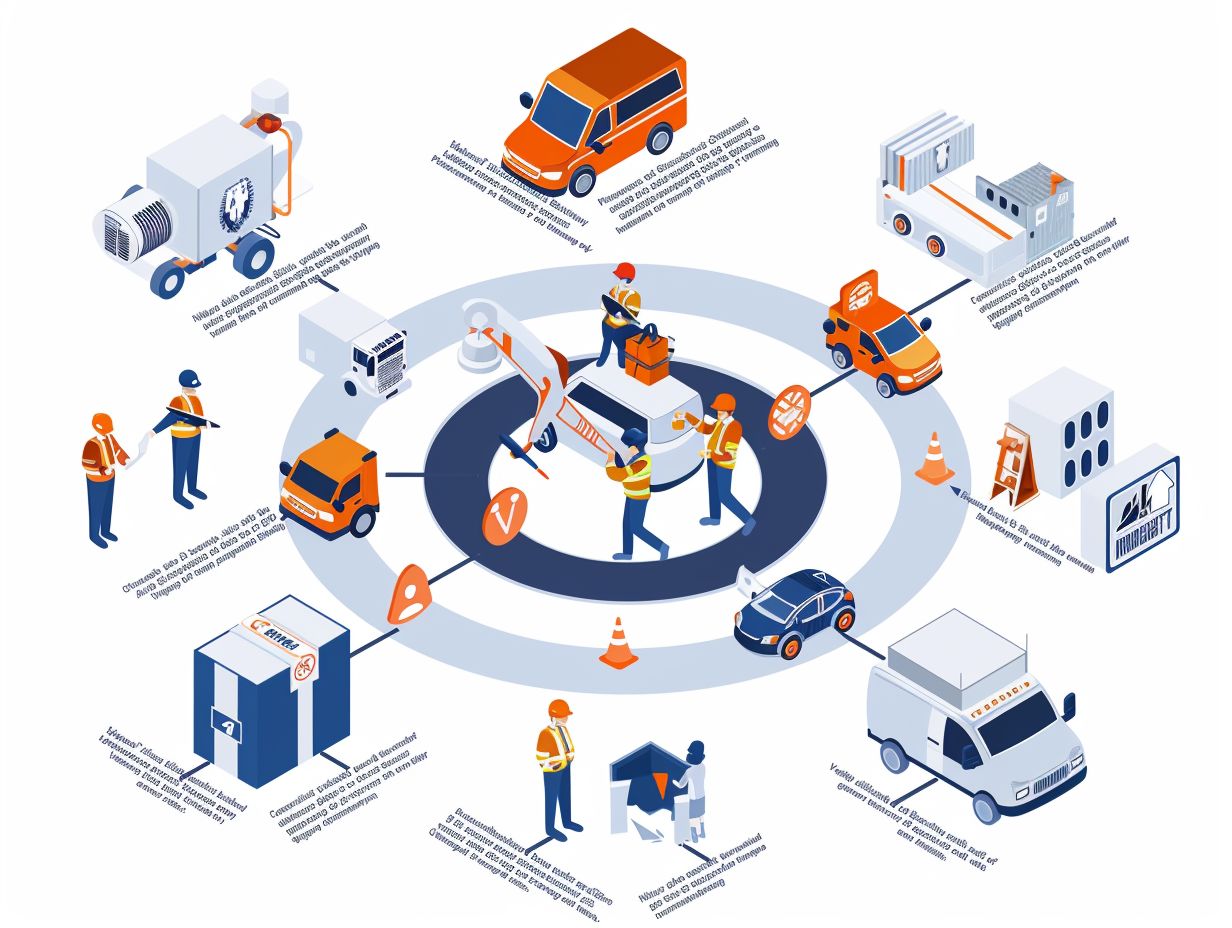Are you ready to effectively manage cybersecurity incidents? With EC-Council’s Certified Incident Handler certification, professionals are equipped with the necessary skills to navigate the Incident Response Lifecycle.
This certification covers everything from establishing a robust incident response plan to eliminating threats and restoring systems. It delves into the various phases of the lifecycle, including preparation, identification, containment, eradication, recovery, and post-incident activities.
Stay tuned to discover how to proficiently manage cybersecurity incidents.
Key Takeaways:

What is the Certified Incident Handler Certification?
The Certified Incident Handler Certification, offered by EC-Council, is designed to equip you with the necessary skills and knowledge to effectively handle cybersecurity incidents in your organization.
This certification program is highly regarded in the industry due to its comprehensive curriculum that covers incident handling and response methodologies, risk management, threat intelligence, and more. Through a combination of theoretical concepts and hands-on practical training, you will gain a deep understanding of how to detect, respond to, and mitigate cybersecurity incidents effectively.
Completing the ECIH program not only enhances your technical expertise but also opens up new career opportunities in cybersecurity roles such as Incident Response Analysts, Security Analysts, or Security Operations Center (SOC) professionals. EC-Council’s accreditation ensures that the certification is recognized globally by employers and organizations seeking skilled incident handlers.
Understanding the Incident Response Lifecycle
Understanding the Incident Response Lifecycle is essential for effectively mitigating cybersecurity threats and managing security incidents in your organization. This process encompasses various stages from preparation to post-incident activities.
- During the preparation phase, you need to establish incident response policies, design response playbooks, and provide training for your incident response teams.
- When incidents arise, the identification phase requires detecting anomalies, analyzing alerts, and confirming security events.
- In the containment phase, the goal is to control and limit the impact of a security incident. Response methodologies like the Cyber Kill Chain and MITRE ATT&CK framework assist incident responders in comprehending attacker behavior and tactics.
Incident responders play a critical role in implementing these methodologies, collaborating with stakeholders, communicating findings, and restoring systems to normal operations.
Overview of the Different Phases
The Incident Response Lifecycle comprises several distinct phases that you must follow to effectively respond to cybersecurity threats and incidents. These phases include preparation, identification, containment, eradication, recovery, and post-incident activities.
During the preparation phase, you should develop mastering incident response plans, conduct risk assessments, and establish communication protocols. In the identification phase, your security teams need to detect and analyze potential security incidents to determine their scope and impact. Containment involves isolating the affected systems to prevent further damage, while eradication focuses on removing the root cause of the incident.
In terms of recovery, your priority should be restoring systems to normal operation and implementing lessons learned to enhance future incident response. Post-incident activities are crucial and involve documenting the incident, conducting a thorough review, and updating incident response procedures based on the findings.
Preparation Phase
In the Preparation Phase of the Incident Response Lifecycle, you are tasked with:
- Developing a comprehensive incident response plan
- Organizing training sessions for incident responders
- Consistently assessing the plan’s efficacy to guarantee preparedness for any potential security incidents
Creating an Incident Response Plan
When creating an Incident Response Plan, you must consider it a critical step in the Preparation Phase. This plan outlines the procedures, roles, and responsibilities of incident responders in the event of a security incident. It serves as a roadmap to efficiently manage and mitigate threats.
Organizations must categorize incidents based on their severity and impact to prioritize responses effectively. Clear escalation procedures ensure that incidents are promptly addressed and escalated to the appropriate personnel if necessary. Defined communication protocols help in disseminating information efficiently among team members and stakeholders for a well-coordinated response on network forensics.
Thorough incident documentation is crucial for preserving evidence, analyzing the incident response process, and enhancing future incident handling strategies. Aligning the Incident Response Plan with organizational goals and compliance standards ensures that responses are consistent with the organization’s overall objectives and legal requirements.
Training and Testing

Training and Testing activities are crucial components of the Preparation Phase in the Incident Response Lifecycle. By providing incident responders with regular training sessions and conducting simulated exercises, organizations can enhance the readiness and effectiveness of their incident response teams.
These ongoing training programs not only serve to bolster the technical skills of responders but also enhance their ability to collaborate and communicate effectively during high-pressure situations. Various types of training programs are available, including technical workshops, scenario-based simulations, and tabletop exercises. Regular testing of the incident response plan ensures that all team members are well-versed in their roles and responsibilities, identifies any gaps in the plan, and allows for adjustments to be made to enhance the overall response strategy.
Identification Phase
The Identification Phase in the Incident Response Lifecycle should focus on promptly detecting and reporting security incidents to initiate the incident handling process. By establishing strong detection mechanisms and incident reporting procedures, organizations can swiftly identify potential threats.
Detecting and Reporting Incidents
Detecting and Reporting Incidents involves leveraging threat modeling techniques, threat intelligence sources, and incident response methodologies to identify potential security breaches and promptly report them to the incident response team for further investigation and containment.
Implementing threat modeling plays a crucial role in incident identification by helping organizations understand and prioritize potential threats based on their existing security posture. By analyzing potential attack vectors and vulnerabilities, how EC Council’s incident handler assists in anticipating and mitigating security incidents before they occur.
Leveraging cyber threat intelligence sources such as open-source feeds, dark web monitoring, and information sharing platforms enables proactive detection of emerging threats and malicious activities. Collaboration between incident responders and threat intelligence analysts is essential to ensure a coordinated and effective response to security incidents, enhancing overall incident detection capabilities.
Containment Phase
The Containment Phase in the Incident Response Lifecycle focuses on isolating and containing security incidents to prevent further damage and limit the impact on organizational systems and data. Implementing effective containment strategies is vital in mitigating the spread of cyber threats.
Isolating and Containing the Incident
In the Incident Response Lifecycle, a critical step is Isolating and Containing the Incident. This process involves implementing immediate controls and security measures to prevent the escalation of cybersecurity threats and unauthorized access to sensitive data. By swiftly isolating affected systems, you can effectively limit the impact of security incidents.
During the isolation process, it is crucial to maintain comprehensive documentation of the actions taken and to keep communication channels open with key stakeholders. ECIH Master is key in assessing the potential impact of the incident on your organization’s operations and reputation.
As an incident handler, it is vital to prioritize containment efforts by identifying and securing vulnerable entry points to prevent further compromise. Continuous monitoring of the containment measures ensures that any signs of re-infection or lateral movement are promptly addressed.
Eradication Phase
The Eradication Phase of the Incident Response Lifecycle concentrates on eliminating the root cause of security incidents, restoring affected systems to their pre-incident state, and implementing remediation measures to prevent similar incidents from reoccurring. This phase is essential for ensuring the long-term security of organizational assets.
Removing the Threat and Restoring Systems

Involvement in Removing the Threat and Restoring Systems requires the identification and elimination of all traces of the security incident, patching vulnerabilities, and restoring affected systems to operational status. Incident handlers are pivotal in effectively eradicating threats.
A crucial aspect of this process is Vulnerability Management, which emphasizes proactively identifying, assessing, and addressing security weaknesses before attackers exploit them. Through regular system and application vulnerability scans, organizations can prioritize patching and mitigating potential risks. Remediation techniques may involve applying software patches, performing security updates, configuring firewall rules, and implementing access controls to prevent unauthorized access. Incident responders not only manage immediate threats but also focus on strengthening defenses and improving incident response processes for future occurrences.
Recovery Phase
The Recovery Phase in the Incident Response Lifecycle should focus on bringing affected systems back online, restoring services to normal operations, and monitoring for any reoccurrence of security incidents. It is imperative to engage in continuous monitoring to ensure the stability and security of the recovered systems.
Bringing Systems Back Online and Monitoring for Reoccurrence
Bringing Systems Back Online and Monitoring for Reoccurrence involves assessing the impact of the security incident, conducting risk analysis, and implementing measures to monitor system behavior for any signs of reoccurrence. Incident responders play a crucial role in ensuring post-incident recovery and stability.
After assessing the impact of the security incident, the next step involves conducting a thorough risk analysis to identify vulnerabilities and potential weaknesses in the system. This analysis allows incident handlers to pinpoint areas that need additional security measures to prevent similar incidents from happening again. Once the digital forensics fundamentals risk analysis is completed, actions can be taken to fortify the system against future threats.
Monitoring system behavior post-incident is essential for detecting any anomalies or irregular activities that could indicate a reoccurrence of the incident. Incident handlers need to constantly monitor system logs, network traffic, and user activities to stay vigilant against potential security breaches.
Post-Incident Activity Phase
The Post-Incident Activity Phase in the Incident Response Lifecycle centers on documenting the incident details, conducting a root cause analysis of security breaches, and identifying lessons learned to enhance future incident handling procedures. Thorough documentation and analysis play a crucial role in enhancing the effectiveness of incident response.
Documentation and Analysis of the Incident
The documentation and analysis of the Incident involves documenting all actions taken during the incident response process, analyzing the incident timeline, and identifying areas for improvement. You, as an incident handler, will use this information to enhance incident response procedures and strengthen cybersecurity defenses.
By capturing detailed incident information, such as the type of attack, affected systems, and any indicators of compromise, organizations can better understand the scope and impact of security incidents. Timely and accurate documentation also aids in maintaining a clear chronology of events, which is crucial for forensic investigations.
Cyber threat intelligence plays a pivotal role in incident analysis, providing context on known threats and tactics used by threat actors. Continuous improvement of incident response strategies, guided by post-incident analysis findings, ensures that you are better prepared to mitigate future threats effectively.
Frequently Asked Questions
What is EC-Council’s Certified Incident Handler certification?

EC-Council’s Certified Incident Handler (ECIH) certification is a professional certification program designed to provide individuals with the necessary knowledge and skills to effectively handle and respond to security incidents. This certification is recognized globally and is designed for individuals who are responsible for incident handling and response in their organizations.
What is the Incident Response Lifecycle?
The Incident Response Lifecycle is a systematic approach to handling security incidents. It consists of six stages: preparation, detection and analysis, containment, eradication, recovery, and post-incident activity. This framework helps organizations to effectively and efficiently respond to security incidents, minimizing the impact on their systems and data.
Why is it important to have a certified incident handler?
Having a certified incident handler is important because they have the necessary skills and knowledge to effectively respond to security incidents. They can help organizations minimize the impact of security incidents, reduce downtime, and prevent future incidents from occurring. Additionally, having a certified incident handler can also help organizations comply with regulatory requirements.
What are the benefits of becoming a certified incident handler?
There are several benefits of becoming a certified incident handler, including acquiring in-demand skills, improving career prospects, and gaining recognition in the industry. ECIH-certified professionals are highly sought after by organizations as they have the necessary knowledge and skills to effectively respond to security incidents, making them valuable assets to any organization.
How can I prepare for the ECIH certification exam?
You can prepare for the ECIH certification exam by attending official training courses provided by EC-Council, self-study using study materials provided by EC-Council, and practicing with mock exams. It is recommended to have a solid understanding of the Incident Response Lifecycle, as well as knowledge of various tools and techniques used in incident handling and response.
What is the validity of the ECIH certification?
The ECIH certification is valid for three years from the date of certification. To maintain the certification, individuals are required to earn 120 continuing education credits (CEUs) within this three-year period. These CEUs can be earned through various methods, such as attending trainings, conferences, or webinars, or by publishing research papers related to the field.
